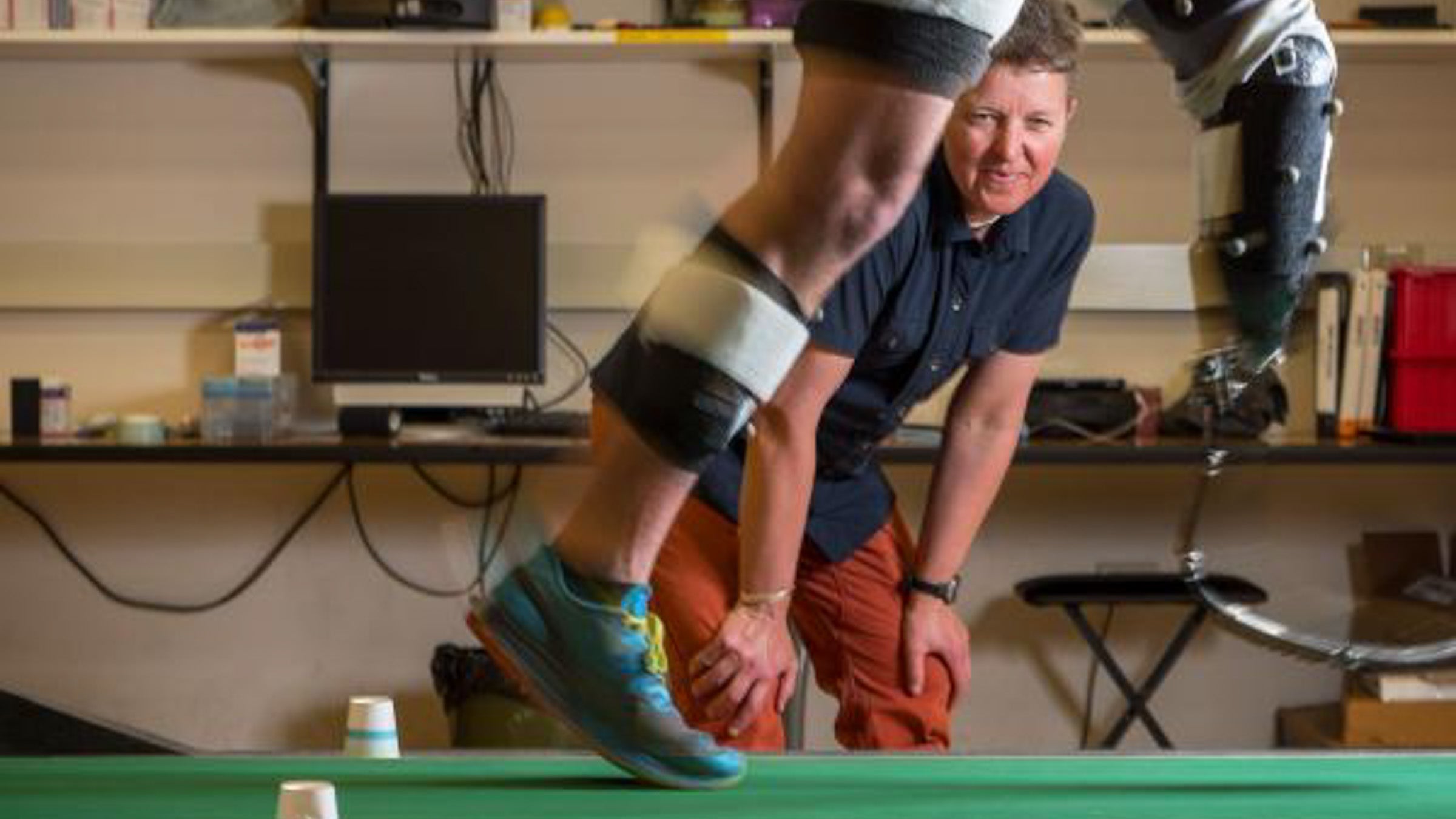The Science and Controversy of Running Blade Prosthetics
Do high-tech prosthetics give runners a competitive advantage?
New perk: Easily find new routes and hidden gems, upcoming running events, and more near you. Your weekly Local Running Newsletter has everything you need to lace up! .
In the 1970s television show The Six-Million Dollar Man, a severely injured test pilot is rebuilt with nuclear-powered bionic limbs. These cybernetic parts allowed the pilot to suddenly become superhuman—the new-and-improved Colonel Steve Austin could not only run faster than a car, he could lift said car with just one bionic arm (which, as viewers discovered in episode six, also contained a Geiger counter to save the world from doomsday). Every week, the opening credits would intone with great seriousness:
Gentlemen, we can rebuild him. We have the technology. We have the capability to make the world’s first bionic man. Steve Austin will be that man. Better than he was before.
Better… stronger… faster.
The Six-Million Dollar Man could have been an icon for inclusivity—people with disabilities can do cool things! Instead, the takeaway was that artificial body parts are bionic wonders, increasing ordinary human powers beyond the realm of possibility. From the action-adventure series Bionic Woman, which featured Steve Austin’s cybernetic counterpart, Jamie Sommers, to the whatzits and whirlygigs within the arms of the animated Inspector Gadget, pop culture has created a fantastical story of phenomenal feats contained within ordinary prosthetic limbs. Even today, prosthetics are largely misunderstood, which impacts the way users are treated in a variety of personal and professional settings.
Perhaps no better example of this effect is Blake Leeper’s recent lawsuit against , the governing body of track and field. The American sprinter, who was born with both legs missing below the knee, sued for the right to compete against runners with biological legs at the 2021 Tokyo Olympics. The eight-time Paralympic Track and Field medalist, world record holder, and three-time American record holder was told his prosthetic legs were an “artificial competitive advantage” under , which intends to prevent disabled athletes from competing against able-bodied athletes with mechanical aids that overcompensate for the loss created by a disability.
Leeper isn’t the first athlete with a limb difference to sue for the right to compete against athletes with biologically intact limbs. South African sprinter Oscar Pistorius filed a similar lawsuit after being banned from able-bodied competition in 2008. The prevailing belief was that Pistorius’s prosthetics, known as “Flex-Foot Cheetahs,” enabled him to use less energy than non-amputee athletes while covering the same distance, and therefore run faster. Pistorius appealed the ban and won, making history as the .
Still, no clear precedent was set for future athletes, and in 2019 Leeper found himself in the same fight as Pistorius. In his appeal to compete against all athletes, Leeper was tasked with the burden of proving he was not, in fact, a bionic man.








